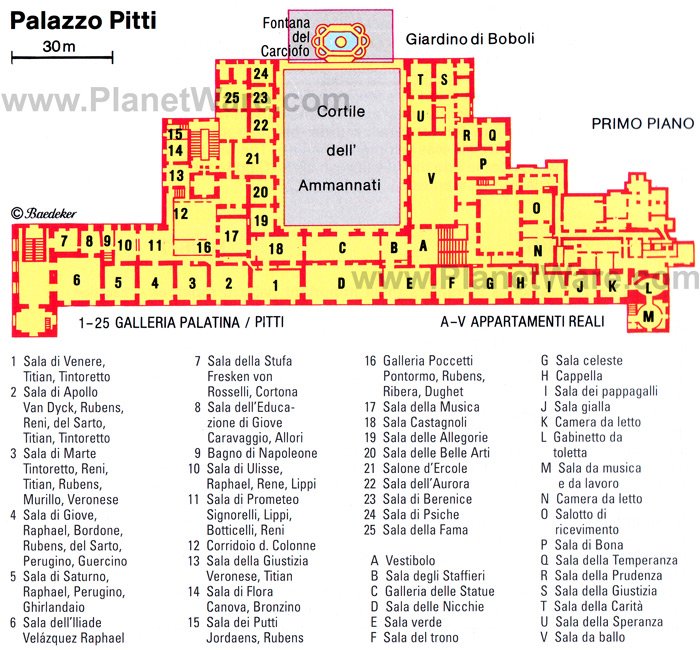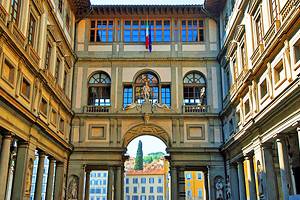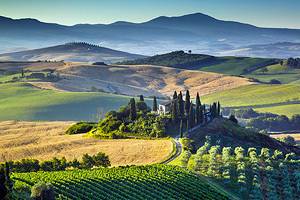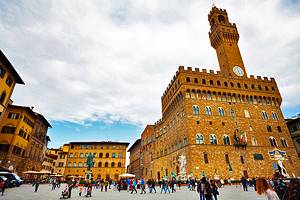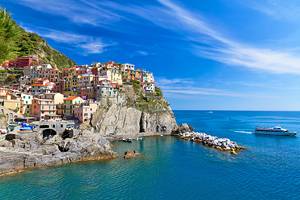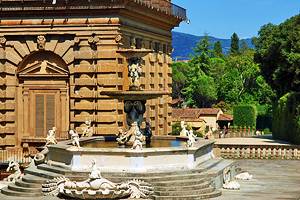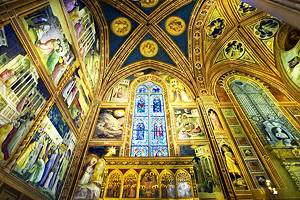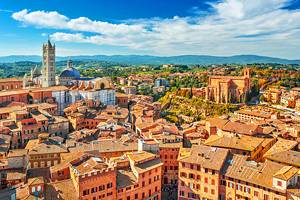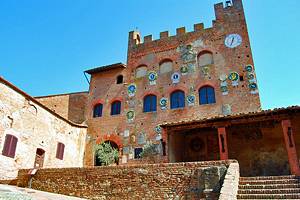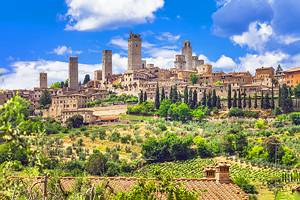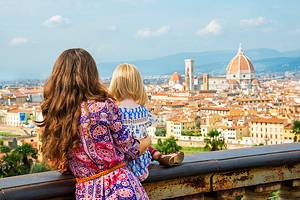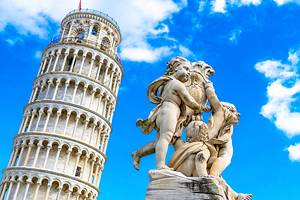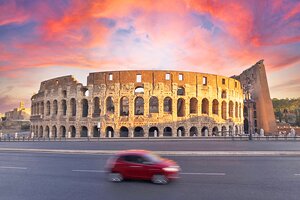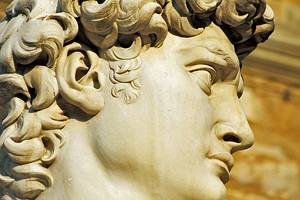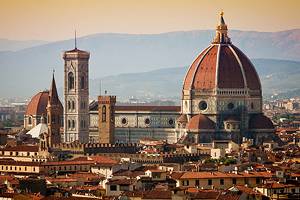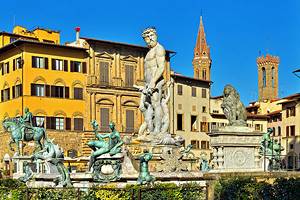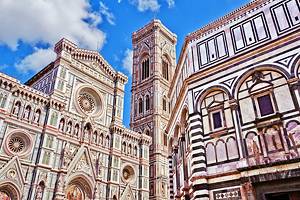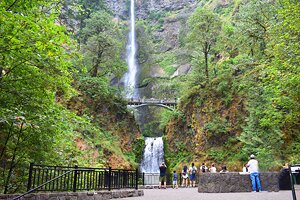8 Top Highlights of the Pitti Palace & Boboli Gardens in Florence
The Palazzo Pitti is Florence's most important palace, and its combination of splendor, history, and the collections it houses make it one of the city's most popular attractions. Add to that the 111 acres of terraced and manicured gardens that rise up the hill behind it, and you'll see why so many tourists cross the river to the Oltrarno neighborhood to visit.
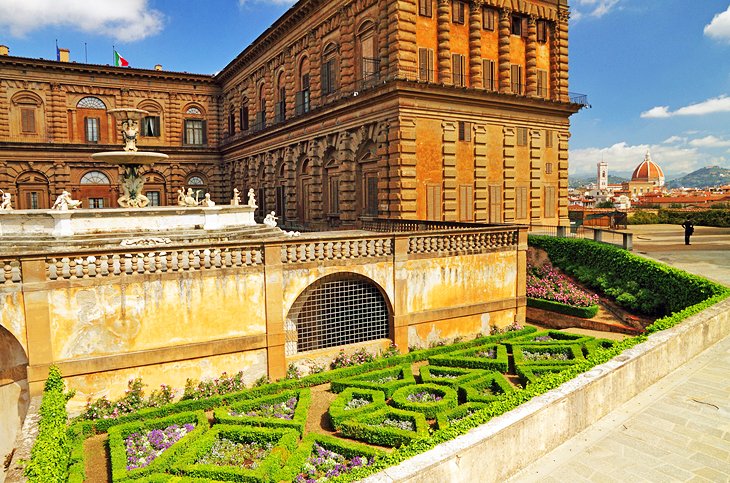
From your first view of its 204-meter-long façade (longer than two American football fields), you're sure to be impressed. The art gallery (Galleria Palatina) inside is one of the most important in the world, its collections almost rivaling those of the Uffizi Gallery, with multiple works by Raphael, Titian, Tintoretto, and Rubens. Other collections are in its treasury, Galleria d'Arte Moderna (Gallery of Modern Art), and the Appartamenti ex Reali (Royal Apartments).
Respected and wealthy Florentine merchants, the Pittis were equal to the Medici in terms of pride and ambition when they built their magnificent palace beginning in 1457. But the Pitti fortunes were not quite up to those ambitions, and a century later, the Medici acquired it from the bankrupt Pittis.
The Medicis completely renovated and enlarged the palace, decorating its apartments with paintings that formed the basis of the Galleria Palatina. The Palazzo Pitti became the residence of the Italian kings (1864-1871) when Florence was the capital of a partially united Italy.
In 1919, King Victor Emmanuel III finally gave it to the city, which enlarged the museums with its other collections. Behind the palace, the Boboli Gardens rise in graceful terraces to the foot of Fort Belvedere, and for tourists weary of art and palatial interiors, wandering through the refreshing green oasis is a restorative break. You can visit the gardens separately from the main palace galleries.
- 1. Galleria Palatina (Palatine Gallery)
- 2. Royal Apartments
- 3. Gallery of Modern Art
- 4. Museo degli Argenti (The Medici Treasury)
- 5. Museum of Costume and Fashion
- 6. Porcelain Museum
- 7. Boboli Gardens
- 8. Kaffeehaus
- Tips & Tactics: How to Make the Most of Your Visit to the Pitti Palace and Boboli Gardens
- Address
- Map of Highlights of the Pitti Palace & Boboli Gardens in Florence
1. Galleria Palatina (Palatine Gallery)
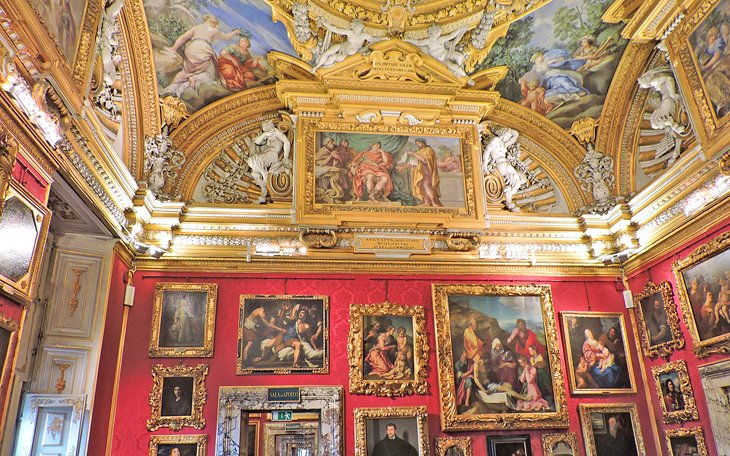
The Galleria Palatina pictures are not in chronological order but are arranged as part of the decor of the elaborate state-rooms. The rooms are named for the themes of the pictures or the artists represented, and a tour of these leads into the former Royal Apartments.
Sala di Venere
In the center stands the Italian Venus, which Napoleon commissioned from Antonio Canova in 1810. Four pictures show the development of Titian, his Concert, Portrait of a Lady, and two portraits. Venus, Amor, and Vulcan is an early work of Tintoretto. Return from the Hayfields and Ulysses in the Phaeacian Isle are by Rubens.
Sala di Apollo
Outstanding among the 16th- and 17th-century works are Titian's Maria Magdalena, painted for the Duke of Urbino between 1530 and 1535, and his Portrait of a Nobleman.
Sala di Marte
The painted ceiling on the theme of war is by Pietro da Cortona, with the Medici coat of arms in the center. On the same theme is Rubens' monumental The Consequences of War, showing Venus vainly entreating Mars not to go to war. His Four Philosophers has a self-portrait at the top left. Also here are Tintoretto's portrait of Alvise Cornaro, Titian's portrait of Cardinal Ippolito de'Medici, and Van Dyck's portrait of Cardinal Guido Bentivoglio.
Sala di Giove
The ceiling is by Pietro da Cortona and refers to the fact that this room was a throne room; its major work is La Velata, one of Raphael's finest female portraits, painted about 1516.
Sala di Saturno
Here are more works by Raphael, including the portraits Vision of Ezekiel and Madonna with Baldachin, and paintings by his contemporaries: Perugino, Fra Bartolomeo, Andrea del Sarto, and Ridolfo del Ghirlandaio.
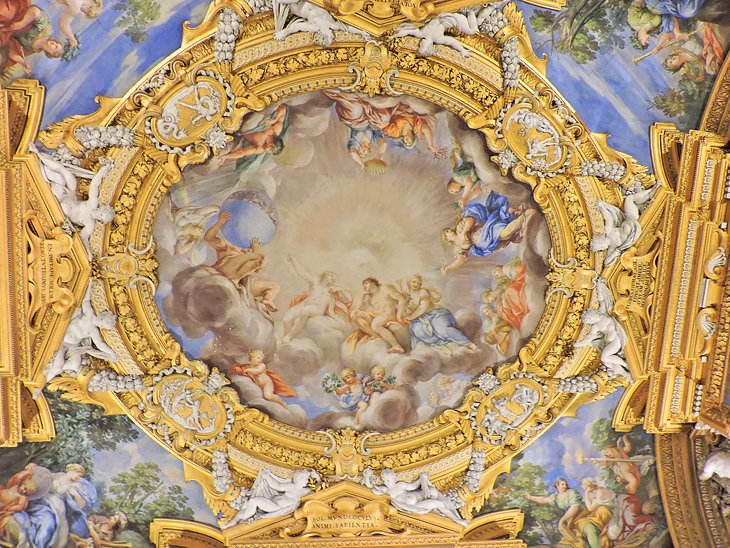
Sale dell'Iliade
Unlike the previous rooms, which have 17th-century decor, the Iliad Room was done between 1819 and 1825, with a ceiling depicting Olympus, and the scenes from Homer's Iliad in the lunettes, painted by Luigi Sabatelli. Look for Philip IV of Spain by Velasquez and Raphael's La Gravida.
Sala della Stufa
The little Stove Room was decorated in the early 17th century on the theme of the four Ages: golden, silver, copper, and iron.
Sala di Ulisse
The ceiling of the Ulysses Room shows the homecoming of Ulysses, and the most important work is Raphael's Madonna dell'Impannata (ca. 1512).
Sala di Prometeo
Works in this room are from the 15th and 16th centuries, by such artists as Filippo Lippi, Sandro Botticelli, Ridolfo del Ghirlandaio, and Guido Reni.
Sala della Giustizia
Works from the 16th-century Venetian School are highlighted by Titian's portrait of Tommaso Mosti (or possibly of his brother Vincenzo Mosti).
Galleria del Poccetti
The frescoes in this small gallery - it was an open loggia until 1813 - were first attributed to the Florentine artist Poccetti but later found to be by Filippo Tarchiani.
Sala Castagnoli
Named for the artist Giuseppe Castagnoli, who painted the ceiling in 1815, the room houses two enormous marble statues from the Villa Medici in Rome.
2. Royal Apartments
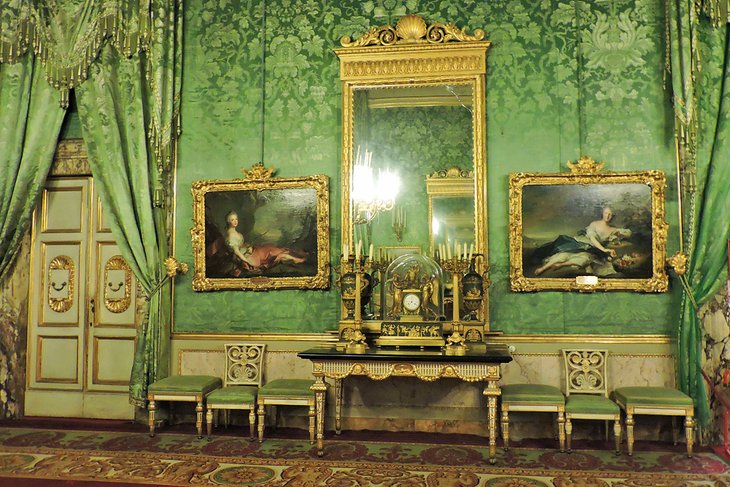
The magnificent rooms of the Appartamenti ex Reali, the former Royal Apartments, which make up the entire right wing of the palace, were last lived in by Victor Emmanuel II, Umberto I, Queen Margherita, and Victor Emmanuel III. These apartments give a good picture of the history of the palace - and of interior decoration tastes - from the time of the Medici through the mid-19th-century.
The earliest of these are along the front of the palace, decorated by the Medici between the mid-1600s and the end of their dynasty in 1734. You can see their tastes in the elaborate stucco work and gilding, typical of the Florentine Baroque, in the Chapel. Later styles are evident in the Oval Room, with its Rococo ceiling, popular in the late 18th century.
Throughout these apartments, be sure to notice the frescoes and stucco-work, along with the sumptuous furniture, paintings, statues, and tapestries, mostly from the 19th century, but some Florentine Baroque.
3. Gallery of Modern Art
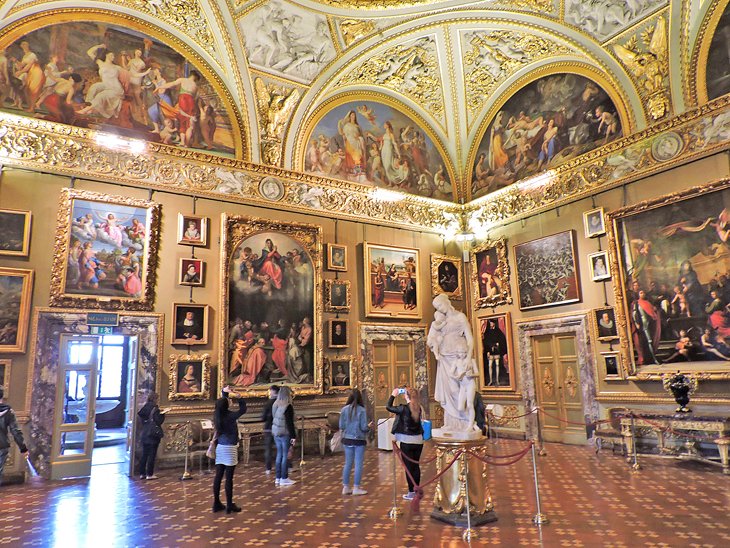
The Gallery of Modern Art, on the second floor of the Pitti palace, gives an impressive overview of 19th- and early 20th-century painting in Tuscany and elsewhere in Italy, along with excellent examples of sculpture from the same period.
A special section is devoted to the works of the Tuscan painters of the Macchiaioli School, with works by Giovanni Fattori, Silvestro Lega, Telemaco Signorini, and others. Another section features contemporary Italian painters. The works here are arranged in chronological order from Neoclassicism to the 1920s, making it possible to trace the various schools and artistic movements.
4. Museo degli Argenti (The Medici Treasury)
In the rooms on the ground floor and mezzanine where the Medicis spent the summer months, is the Silver Museum, which contains not just the work of silver and goldsmiths but also precious stones, jewelry, painted glass, and porcelain. The collection is based on the silver owned by the Medici family, with additions from the Uffizi, the Bargello, and the treasures of the princely archbishops of Salzburg and the kings of Italy.
Look especially for the 17th- and 18th-century jewel caskets, 16th- and 17th-century vases and crystal, carved ivory and amber, and the Medicis' jewelry collection. The ornamental cabinet from 1709 is a spectacular example of Baroque furniture.
5. Museum of Costume and Fashion
At the end of the Boboli Gardens, the 18th-century Palazzina della Meridiana, houses the Museum of Costume and Fashion, formerly known as the Costume Gallery. Italy's only museum dedicated to the history of fashion, this is also one of the world's leading fashion museums, with about 6,000 items of clothing and fashion accessories.
You can follow the history of fashion and apparel from the 16th to the 20th centuries, both in popular fashions and theater costumes and accessories. Movie fans will enjoy seeing costumes worn in famous film scenes. Perhaps the rarest of the historical items is clothing worn by Grand Duke Cosimo I de' Medici and his family in the 1500s.
6. Porcelain Museum
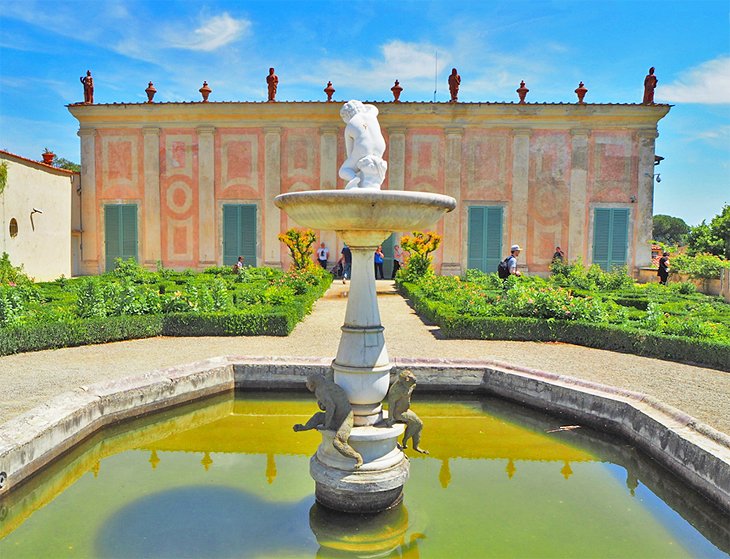
The pink Casino del Cavaliere, built in the 17th century, sits at the top of the hill overlooking Boboli gardens and houses a rich collection of porcelain art. Mainly tableware, most came from the various Tuscan ruling families, including the Medici and the Savoy.
The museum displays works from the Royal Manufactory of Naples and from nearby Doccia, as well as French Sèvres porcelain and 17th-century works from Meissen, in Saxony. A number of pieces are as interesting for their past ownership as for their artistry, for example those that were given by Napoleon to his sister, who was Grand Duchess of Tuscany for a brief time.
7. Boboli Gardens
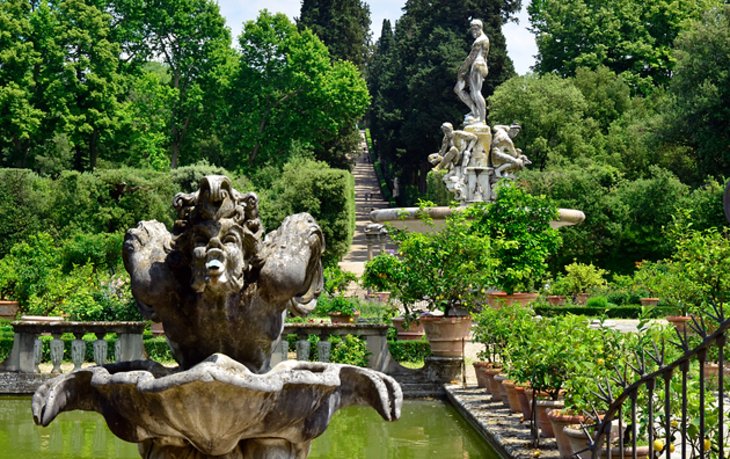
Stretching for 111 acres behind and above Palazzo Pitti, the Boboli Gardens were begun between 1550 and 1560 and continued as a work-in-progress until a century later. Rising in terraces, the gardens are among Europe's finest classical parks, worth exploring for their own beauty and for the view of Florence from their highest point, the terrace of the Kaffeehaus. Visiting the gardens is one of the most popular things to do in Florence, with about one million visitors a year.
Part formal parterre, part landscape garden, part idealized nature, and part folly, the gardens are filled with sculptures and fountains, which you'll find as you stroll its winding paths and promenades. Near the gate beside the palace is one of the park's most photographed statues, Fontana del Bacco (1560), a fountain with Cosimo I's court dwarf pictures as Bacchus astride the back of a tortoise.
In the far corner to the left is a grand folly, Grotta del Buontalenti, a faux cave decorated in the Mannerist style, complete with stalactites and stalagmites. Look at these closely, and you'll see that they are sheep and shepherds. In the corners of the grotto are copies of Michelangelo's Slaves, whose originals are now in the Galleria dell'Accademia. A smaller grotto lies at the far edge beyond the Ladies Garden.
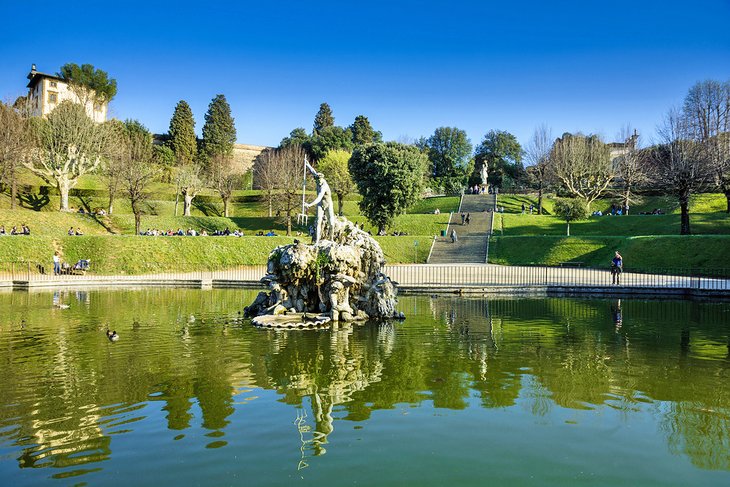
On an upper terrace overlooking the palace, the Neptune Fountain by Stoldo Lorenzi (1565) shows Neptune standing on a rock surrounded by Tritons and Sirens.
Above Neptune's watery setting is Abbondanza, the enormous statue of Plenty, begun by Giambologna and completed by Pietro Tacca in 1637. Beyond, at the far edge of the Boboli is Palazzina della Meridiana, home of the Museum of Costume and Fashion. Look in the adjoining Giardino del Cavaliere for the monkey fountain. On this terrace above the ramparts, Italy's first potatoes were grown.
Leading from the wide open space below, the Viottolone cuts a straight promenade to the other end of the gardens, an impressive alley of tall cypresses on either side of which are stands of chestnut, cork oaks, and parasol pines. The Viottolone leads downhill to the Piazzale del Isolotto, an oval piazza with an island and Giambologna's Oceanus (the original is in the Bargello).
A long promenade borders the palace's west wing, leading past the Orangerie and several small gardens to the Amphitheater, opposite the southeast façade. This area was the quarry where stone was cut to build the palace, and was later made into an amphitheater and used by the Grand Duke to stage spectacles. The obelisk is from Egypt and the granite basin from Rome.
8. Kaffeehaus
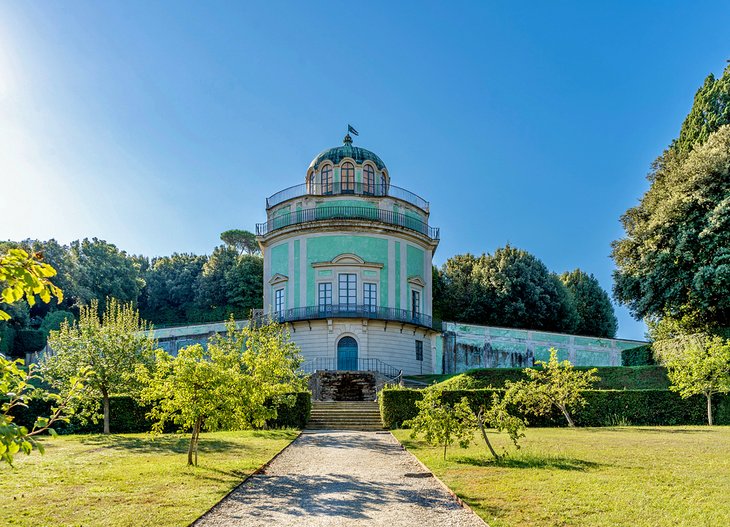
The Rococo Kaffeehaus is on the eastern edge of the gardens, and its terrace looks out over Florence. You may think its German name odd for a pavilion in an Italian garden, but it was commissioned by the palace's then-owner Grand Duke Peter Leopold of Habsburg-Lorraine, who later became Emperor Leopold II of the Austro-Hungarian Empire.
Not surprisingly, this pale green building is reminiscent of the pavilions common at Viennese palaces, with its light, airy interior; onion dome; and Rococo style (a rare example in Florence). At its center is the Great Room, and triangular stairs lead to the belvedere and side mezzanine floors.
Here, the family and guests could drink hot chocolate as they rested from their walks through the gardens. The inside of the dome is painted to resemble an aviary, with birds and vines of flowers appearing as though seen through a screen.
Tips & Tactics: How to Make the Most of Your Visit to the Pitti Palace and Boboli Gardens
- Allow two hours for a quick tour of the palace's highlights (the Palatine Gallery and apartments) and an hour to see the main part of the Boboli Gardens closest to the palace.
- All the various Pitti Palace museums and the Boboli Gardens have the same opening hours.
- It takes more than a day to do a thorough tour of all the museums and exhibits, but the combined ticket is good for 72 hours.
- The Boboli Gardens are on a separate ticket that includes the Porcelain Museum.
- If you plan to see them all, try visiting in segments, interspersed by strolling the nearby Oltrarno streets and stopping to watch Florentine craftspeople at work marbling paper, binding books, creating mosaics, and embossing leather, all crafts that have flourished in this neighborhood for centuries.
- The apartments of the Duchess D'Aosta are not usually open, but you can often see these on free tours during the weekends.
- The palace is known for closing some of the lesser museums, so if you are especially interested in one of them, check to make sure it's open.
Address
- Piazza Pitti 1, Florence
- https://www.uffizi.it/en/pitti-palace
Map of Highlights of the Pitti Palace & Boboli Gardens in Florence
More Related Articles on PlanetWare.com
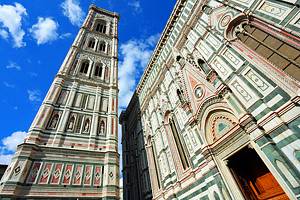
Things to Do in Florence: The Pitti Palace is only one of many in the city, and our visitor's guide to the top palaces in Florence can help you find the best of them. You'll discover more Renaissance and earlier art in Florence's top churches, especially in the great cathedral complex of Santa Maria del Fiori.
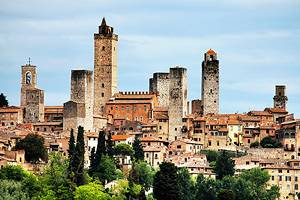
Exploring Tuscany: With so many outstanding places to visit in Florence, you may not think to look outside the city, but there are top-rated attractions throughout Tuscany. For a more low-key experience after busy Florence, consider the beautiful Tuscan hills, with the walled town of Montepulciano or legendary San Gimignano, fairly bristling with medieval towers.
